Marcia Thornton Jones's Blog, page 118
May 12, 2018
It Was A Dark and Stormy...Plot. by Darlene Beck Jacobson
I've never been one to seek out conflict. I'm the ostrich who buries her head in the sand when unpleasantness rears it's emotional head. Of course, it's impossible to hide from conflict; it finds us, no matter where we are. It's always been a challenge for me to write dark, disturbing, or sad passages that I know are important to a story.
It helps to read stories that explore these dark and sad themes. Maybe that's why many of the books that are required reading for middle grade contain themes that deal with the sad and scary events of life. A story I read as a girl that is still read by young people today is DIARY OF A YOUNG GIRL by Anne Frank. Anne's descriptions of everyday preteen life, while hiding with her family from the horrors of Nazi Germany, show us that even under the most horrific circumstances, life goes on and we must find a way to get through each day with hope.
 Another more recent title that deals with war and its aftermath is THE LAST CHERRY BLOSSOM by Kathleen Burkinshaw. This story is based on the childhood of the author's grandmother who survived the bombing of Hiroshima. Out of the death and destruction comes a message of peace and hope for the future.
Another more recent title that deals with war and its aftermath is THE LAST CHERRY BLOSSOM by Kathleen Burkinshaw. This story is based on the childhood of the author's grandmother who survived the bombing of Hiroshima. Out of the death and destruction comes a message of peace and hope for the future. 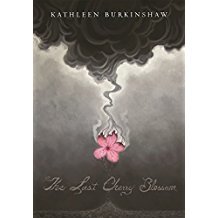
Reading books with difficult themes gives children a chance to learn empathy. It gives them language to properly express emotions. It provides a safe place to explore and discuss ALL aspects of the human condition and to prepare young people for the world they are part of and will one day rule.
Like all difficult things in life, having a chance to talk about it and share it with someone who has "been there" makes the experience more bearable and helps us understand.
For a good explanation of why books with "difficult" themes are important visit:
http://blog.leeandlow.com/2015/03/16/...
It helps to read stories that explore these dark and sad themes. Maybe that's why many of the books that are required reading for middle grade contain themes that deal with the sad and scary events of life. A story I read as a girl that is still read by young people today is DIARY OF A YOUNG GIRL by Anne Frank. Anne's descriptions of everyday preteen life, while hiding with her family from the horrors of Nazi Germany, show us that even under the most horrific circumstances, life goes on and we must find a way to get through each day with hope.
 Another more recent title that deals with war and its aftermath is THE LAST CHERRY BLOSSOM by Kathleen Burkinshaw. This story is based on the childhood of the author's grandmother who survived the bombing of Hiroshima. Out of the death and destruction comes a message of peace and hope for the future.
Another more recent title that deals with war and its aftermath is THE LAST CHERRY BLOSSOM by Kathleen Burkinshaw. This story is based on the childhood of the author's grandmother who survived the bombing of Hiroshima. Out of the death and destruction comes a message of peace and hope for the future. 
Reading books with difficult themes gives children a chance to learn empathy. It gives them language to properly express emotions. It provides a safe place to explore and discuss ALL aspects of the human condition and to prepare young people for the world they are part of and will one day rule.
Like all difficult things in life, having a chance to talk about it and share it with someone who has "been there" makes the experience more bearable and helps us understand.
For a good explanation of why books with "difficult" themes are important visit:
http://blog.leeandlow.com/2015/03/16/...
Published on May 12, 2018 06:00
May 11, 2018
The Hard Stuff by Jody Feldman
 I was one of the lucky ones. My home life, if not completely idyllic, was close. Picture a white picket fence, June and Ward Cleaver as parents, and waking every day to blue skies and bluebirds. Maybe not that, but completely wonderful.
I was one of the lucky ones. My home life, if not completely idyllic, was close. Picture a white picket fence, June and Ward Cleaver as parents, and waking every day to blue skies and bluebirds. Maybe not that, but completely wonderful.I never had to deal with long-term tragedy or extended hardships. Even when situations strayed from the happiness script—and they did—my parents handled them with love and humor and an unspoken (or maybe, spoken) sense that everything would be just fine. I was one of the lucky ones.
But I was also one of the lucky ones when my teachers exposed me, through literature, to other sides of life—disabilities, class struggle, prejudice, and of course, dead dogs, to name a few. Believe me, I didn’t like those books for the way they made me feel—sad, angry, totally uncomfortable. Looking back, though, they were exactly what I needed. With my soft place to fall at home, balancing widening perspectives in the classroom, I was preparing to venture into a world where relatively nothing is nice and neat and perfect.
The books I write may not be filled with tough subjects—I veer toward my default childhood emotions—but I am grateful for those authors who dare to dig deep and tell the stories that too many readers find invaluable as they navigate the hard stuff in their lives. At the same time, they have enormous value to readers like I was; they open our eyes to foreign experiences and allow us to move forward with more understanding, empathy, and compassion. And we are all luckier for that.
Published on May 11, 2018 04:00
May 8, 2018
Making bad things happen to good characters......by Jane Kelley
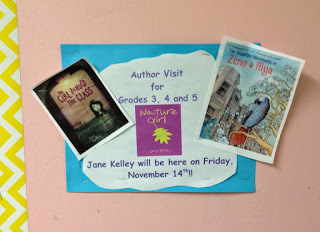
A few years ago I visited a school in Brooklyn to talk about my book, The Desperate Adventures of Zeno and Alya. The kids asked me about parrots, muffins, and writing. One boy didn't want to ask his question in front of the group, however. He knew it would ruin the story for those who hadn't finished reading the book yet. And so if you haven't read that novel this is a
SPOILER ALERT (I always wanted to have an excuse to say that.)
With Johnny's permission, I'll share his emails to me about my character Bunny, who happens to be a pigeon.
 Hello, My name is Johnny and I'm nine years old. I loved your book! I really loved the adventure Zeno was on and how he had to fly over the Atlantic Ocean. I also liked when Alya had to climb the six steps. There was so much tension and excitement.
Hello, My name is Johnny and I'm nine years old. I loved your book! I really loved the adventure Zeno was on and how he had to fly over the Atlantic Ocean. I also liked when Alya had to climb the six steps. There was so much tension and excitement.
I was hoping that Zeno and Bunny could stay friends. I know that sometimes characters have to die in books, so I was just wondering why you chose him to die.
Thank you,Johnny C.
Dear Johnny,I'm glad that you loved my book. I'm especially grateful that you asked me such an important question. Before I could answer it, I had to think a lot about why I chose to have Bunny die after being attacked by the hawk.
First I wondered did any characters ever have to die? I think the answer is yes. If the book is realistic, then the events that the author describes should have real consequences. Zeno's dangerous journey over the Atlantic Ocean was more exciting because you knew that bad things might really happen. Without real risks and real dangers, his accomplishment wouldn't mean nearly as much.
Hawks do kill pigeons. They don't do it to be cruel, they do it because they need food. I think you accept that. But why did that pigeon have to be Bunny? Why couldn't the hawk attack a different pigeon?
Zeno is so selfish, he wouldn't have helped anyone except Bunny. In that scene, Zeno learns that a friend has to fight for a friend. Until Zeno loses Bunny, he doesn't really realize how important friendship is. All Zeno's adventures teach him important lessons. If he didn't learn them, he wouldn't be there to help Alya when she needed it. That would have been sad too.
Like you, I hoped that Zeno and Bunny would remain friends. But Zeno remembers everything Bunny taught him. In that way, Bunny lives on.
Thank you again for asking me such a great question.
Sincerely, Jane Kelley
Hello,
Thank you for writing back to me. What you said makes a lot of sense because Bunny was such a great friend and Zeno cared for Bunny and when he died that changed Zeno and made the story better. It was sad, but I realize why it had to happen.
I can't wait to read your other books.
Sincerely,Johnny C.
 Drawing of Zeno by Eliza WheelerI'm grateful to Johnny for letting me share his thoughts on this blog. I'm lucky to have a reader who will accompany my characters on their journeys, whether across the Atlantic Ocean or up the six steps to a Brooklyn brownstone, and a reader who ponders about why those journeys are important.
Drawing of Zeno by Eliza WheelerI'm grateful to Johnny for letting me share his thoughts on this blog. I'm lucky to have a reader who will accompany my characters on their journeys, whether across the Atlantic Ocean or up the six steps to a Brooklyn brownstone, and a reader who ponders about why those journeys are important. Writing novels for kids is a privilege and a responsibility. Sometimes bad things happen to good characters. That's as it should be. But there better be a very, very, very good reason.
Published on May 08, 2018 03:00
May 5, 2018
The Depth of Children's Literature by Deborah Lytton
A LITTLE PRINCESS, THE SECRET GARDEN, LITTLE WOMEN, and THE CHRONICLES OF NARNIA are some of my favorite works of children's literature that deal with difficult subjects. Add to that list every single Newbery Medal winner and even Harry Potter. Death, loss, abandonment, loneliness--tough subjects are part of life and as such have a crucial place in children's literature. Reading about topics that relate to real life even if set in fantasy worlds can open a dialogue for young readers and encourage them to be strong and brave while also reminding them that they are not alone in these experiences. In writing about difficult subjects, I have two rules that I always follow:
Respect the young reader
I have tremendous respect for young readers. In my MG novel, JANE IN BLOOM, I tackled the heart wrenching subject of death of a sibling and in my YA novel, SILENCE, I focused on sudden deafness and loss of identity. In crafting the stories and the characters' responses to their tough situations, I felt honesty would resonate most with readers. I spent a lot of time researching the topics in both books so that the portrayal of these situations would be as realistic as possible.
Approach the subject in a responsible manner
Regardless of my respect for young readers, there are certain storylines or factual descriptions that may be too difficult for certain age ranges. I consider writing for children and teens to be an honor as well as a responsibility. This is why I ask myself a question when writing: Would I want my own child to read this story? Approaching difficult subjects from the point of view of a parent definitely affects the choices I make as a writer. For me, the responsibility to the reader and awareness of my target age range is most important in being a storyteller for young people.
Young readers have a greater capacity for understanding than many adults recognize. As writers, we do not underestimate these young people, but encourage them. This allows for rich literature that can be both moving and inspiring. Now let's get to work...
Respect the young reader
I have tremendous respect for young readers. In my MG novel, JANE IN BLOOM, I tackled the heart wrenching subject of death of a sibling and in my YA novel, SILENCE, I focused on sudden deafness and loss of identity. In crafting the stories and the characters' responses to their tough situations, I felt honesty would resonate most with readers. I spent a lot of time researching the topics in both books so that the portrayal of these situations would be as realistic as possible.
Approach the subject in a responsible manner
Regardless of my respect for young readers, there are certain storylines or factual descriptions that may be too difficult for certain age ranges. I consider writing for children and teens to be an honor as well as a responsibility. This is why I ask myself a question when writing: Would I want my own child to read this story? Approaching difficult subjects from the point of view of a parent definitely affects the choices I make as a writer. For me, the responsibility to the reader and awareness of my target age range is most important in being a storyteller for young people.
Young readers have a greater capacity for understanding than many adults recognize. As writers, we do not underestimate these young people, but encourage them. This allows for rich literature that can be both moving and inspiring. Now let's get to work...
Published on May 05, 2018 21:49
May 3, 2018
On Writing About Race and Racism
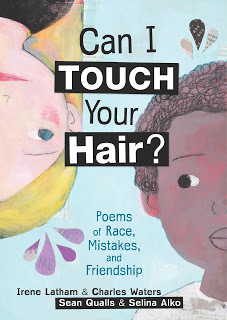 When Charles Waters and I starting writing CAN I TOUCH YOUR HAIR? Poems of Race, Mistakes and Friendship, it felt like diving out of an airplane. We're just regular people – not experts about systemic racism – not experts on anything.
When Charles Waters and I starting writing CAN I TOUCH YOUR HAIR? Poems of Race, Mistakes and Friendship, it felt like diving out of an airplane. We're just regular people – not experts about systemic racism – not experts on anything. So right away we knew we just had to be ourselves and be willing to make mistakes. Our goal was to bring to kids a way to talk about race and racism in an open, accepting way. We decided our job was to share our experiences and raise questions – not necessarily provide answers.
As we've traveled across the U.S. sharing this book, we've been learning right along with our readers.
 Wealthy Elementary
Wealthy Elementary (Grand Rapids, MI)In Michigan, at East Grand Rapids Middle School, we learned that our language about striving for “tolerance” was outdated. What we're aiming for is belongingness – for all children.
We learned about micro-aggressions – which are small, often overlooked ways people are cruel to each other.
We learned students mostly want to be heard – so our job is to listen.
At the University of Alabama, we learned how asking someone, “Can I touch your hair?” is related to the issue of consent – which is related to #MeToo and how to empower girls in the face of sexual harassment: everyone has the power to say NO.
 P.S. 15, New York CityIn Brooklyn at Co-Op School -Joyful Learning, we learned using the language “boys and girls” to greet students is not as inclusive as addressing them as “second graders” or “learners” or “readers.”
P.S. 15, New York CityIn Brooklyn at Co-Op School -Joyful Learning, we learned using the language “boys and girls” to greet students is not as inclusive as addressing them as “second graders” or “learners” or “readers.”In Hattiesburg, Mississippi in a session with Leah Henderson, author of ONE SHADOW ON THE WALL, I shared what we've learned about how these conversations can be assisted by the following:
1. Choosing not to be offended2. Instead of beating yourself up over a mistake and saying, "what was I thinking?" instead say, "what was I learning?"
We're so thrilled to be continuing this conversation with readers of all ages... take a look at our padlet of art and poems inspired by the book. Thank you for joining us on this adventure!

Irene Latham is an Alabama author of more than a dozen current and forthcoming poetry, fiction and picture books for children and adults, including Leaving Gee's Bend, 2011 ALLA Children's Book of the Year and Can I Touch Your Hair? Poems of Race, Mistakes and Friendship (with Charles Waters). Winner of the 2016 ILA Lee Bennett Hopkins Promising Poet Award, she also serves as poetry editor for Birmingham Arts Journal. irenelatham.com
Published on May 03, 2018 17:33
May 2, 2018
Tough Subjects for Young Readers By Ann Haywood Leal
I have never been of the book banning school of thought. In fact, I may be generalizing, but I highly suspect that a great number of the most fervent book banners out there, haven't read the to-be-banned book in its entirety. Taking something out of context and constructing your own story around it can be very risky, indeed.
 My parents never put a limit on what I was reading. I was fortunate in that they let me choose my own books and to form my own opinions about them, even from an early age. I believe that there are certain subjects that kids need their books to address--and many are what we might consider "edgy" or just plain tough subjects like racism, poverty, abuse, and homelessness. For the readers who are experiencing any of these in real life, they may see themselves in the fictional character. It can help them sort through their problem, and possibly to gain some courage to deal with it--if the character in the book can get through it, then maybe they can get through it, too.
My parents never put a limit on what I was reading. I was fortunate in that they let me choose my own books and to form my own opinions about them, even from an early age. I believe that there are certain subjects that kids need their books to address--and many are what we might consider "edgy" or just plain tough subjects like racism, poverty, abuse, and homelessness. For the readers who are experiencing any of these in real life, they may see themselves in the fictional character. It can help them sort through their problem, and possibly to gain some courage to deal with it--if the character in the book can get through it, then maybe they can get through it, too. Other readers can develop empathy for others who are experiencing these things, hopefully increasing tolerance and social awareness toward those who are in different situations--those they consider different from them.
Novels and picture books that include tough subjects can all be done with gentleness and hope, which is what we want for all of our young readers, don't we?

Published on May 02, 2018 16:35
May 1, 2018
Smack Dab News
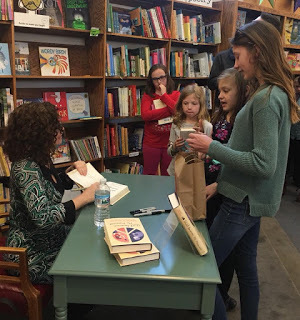 Sheila O'Connor celebrated the launch of her new novel, UNTIL TOMORROW, MR. MARSWORTH, with events at two amazing, award-winning bookstores for young people: Wild Rumpus in Minneapolis and Red Balloon in St. Paul.
Sheila O'Connor celebrated the launch of her new novel, UNTIL TOMORROW, MR. MARSWORTH, with events at two amazing, award-winning bookstores for young people: Wild Rumpus in Minneapolis and Red Balloon in St. Paul.
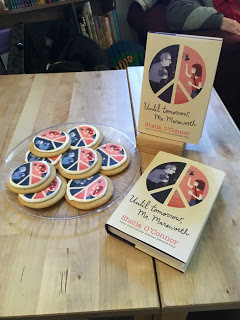
Published on May 01, 2018 05:00
April 29, 2018
Gems of the Past
By Charlotte Bennardo
If you haven't been paying attention, our theme this month is "Hidden Gems." For some, it's digging through old manuscripts looking for that shining idea, sentence, or character. For others, it's rereading favorite books to reconnect with a character or situation, or combing through used book/library sales, discovering a gem someone has left behind. Maybe it's finding wisdom in a new book.
 Photo courtesy of Pexels
Photo courtesy of Pexels
Besides all those, I find gems in the past - my past. Whether we try to do it consciously or not, we authors put a bit of ourselves in each book we write; maybe not directly in the character, making them just like us, but in little ways, gems of our past find their way into the manuscript. One of my favorite memories, which acts as a happy trigger, is the smell of the ocean. A saltwater breeze conjures up my younger years, when either my parents took me to Jones Beach on Long Island, or I went to parties on Mattituck Beach in my high school years. That smell brings me instant joy and I've used that for a character in turmoil in a manuscript draft - the character breathes in the salty air slowly, savoring a moment of contentment.
Other 'gems' from my past which have found their way into my writing: my love of nature, seen all through the Evolution Revolution series about a squirrel named Jack fighting against construction machines and scientists to save his wood. My fanatical belief in recycling shows up in the Sirenz books, where the character Meg nags her counterpart Sharisse about being responsible for her share of recycling waste. And then there's Sharisse's love of sparklies like diamonds (ooooh, I love the sparklies!). In my sci fi novel draft, it's all about space and exploration. My dad worked in the space program, building the Lunar Evac Module (LEM), and passed down a love of science and space.
I'm not the only author who does this, mines memories for precious bits of 'brilliance' to make our stories sparkle. Twilight's Bella reads the same book over and over- Wuthering Heights . Do you want to bet that is was a favorite read for Stephanie Meyer? Sirenz co-author Natalie Zaman has a love of fashion, which was used for both characters Meg and Sharisse, but in different ways. Fellow writing colleague Audrey Vernick's book, The Kid from Diamond Street, reflects her love of baseball. I think it would be almost impossible for any author not to put part of themselves, even minutely, into their work.
Next time you read someone's novel or picture book, see if you can pick out the pieces of their lives and memories, hidden in the prose like a diamond in a cave wall, waiting to shine.
If you haven't been paying attention, our theme this month is "Hidden Gems." For some, it's digging through old manuscripts looking for that shining idea, sentence, or character. For others, it's rereading favorite books to reconnect with a character or situation, or combing through used book/library sales, discovering a gem someone has left behind. Maybe it's finding wisdom in a new book.
 Photo courtesy of Pexels
Photo courtesy of PexelsBesides all those, I find gems in the past - my past. Whether we try to do it consciously or not, we authors put a bit of ourselves in each book we write; maybe not directly in the character, making them just like us, but in little ways, gems of our past find their way into the manuscript. One of my favorite memories, which acts as a happy trigger, is the smell of the ocean. A saltwater breeze conjures up my younger years, when either my parents took me to Jones Beach on Long Island, or I went to parties on Mattituck Beach in my high school years. That smell brings me instant joy and I've used that for a character in turmoil in a manuscript draft - the character breathes in the salty air slowly, savoring a moment of contentment.
Other 'gems' from my past which have found their way into my writing: my love of nature, seen all through the Evolution Revolution series about a squirrel named Jack fighting against construction machines and scientists to save his wood. My fanatical belief in recycling shows up in the Sirenz books, where the character Meg nags her counterpart Sharisse about being responsible for her share of recycling waste. And then there's Sharisse's love of sparklies like diamonds (ooooh, I love the sparklies!). In my sci fi novel draft, it's all about space and exploration. My dad worked in the space program, building the Lunar Evac Module (LEM), and passed down a love of science and space.
I'm not the only author who does this, mines memories for precious bits of 'brilliance' to make our stories sparkle. Twilight's Bella reads the same book over and over- Wuthering Heights . Do you want to bet that is was a favorite read for Stephanie Meyer? Sirenz co-author Natalie Zaman has a love of fashion, which was used for both characters Meg and Sharisse, but in different ways. Fellow writing colleague Audrey Vernick's book, The Kid from Diamond Street, reflects her love of baseball. I think it would be almost impossible for any author not to put part of themselves, even minutely, into their work.
Next time you read someone's novel or picture book, see if you can pick out the pieces of their lives and memories, hidden in the prose like a diamond in a cave wall, waiting to shine.
Published on April 29, 2018 06:00
April 25, 2018
YOUR OWN HIDDEN GEMS (YES, YOU GOT 'EM) HOLLY SCHINDLER
I had just released my writing guide for kids (INVENT YOUR OWN SUPERHERO) when I came across this in the archives:
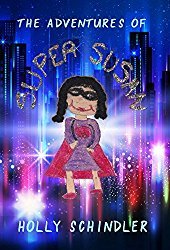
Super Susan is a heroine I created when I was about 8, judging by the handwriting of my initial notebook story. I had long forgotten all about her, but I absolutely fell in love with her all over again. And really, I couldn't come up with anything more timely: a superhero whose power is kindness!
I enjoyed Super Susan so much, I wrote and released a new story all about her--and even incorporated some of my 8-year-old artwork into the cover.
But the thing is, we've all got these gems in the archives. Maybe it's a character, or a passage. Maybe it's a surprise twist. Every single old piece of writing has some gold nugget buried in it.
I just think we get so discouraged with some of our older manuscripts that we start to think of them, at a certain point, as being complete and total junk. Maybe we write ourselves into a corner, or maybe we got a billion rejections for a particular project. But for some reason, we stop seeing this thing that had once given us so much joy as a limitless bucket of potential. Instead, we see it in a completely negative light.
But there are absolutely gems in those manuscripts. Sometimes, it just takes a little time, a little distance, in order to find them.
We've all got drawer manuscripts. Get yours out. Sift through it.
Find your gems.

Super Susan is a heroine I created when I was about 8, judging by the handwriting of my initial notebook story. I had long forgotten all about her, but I absolutely fell in love with her all over again. And really, I couldn't come up with anything more timely: a superhero whose power is kindness!
I enjoyed Super Susan so much, I wrote and released a new story all about her--and even incorporated some of my 8-year-old artwork into the cover.
But the thing is, we've all got these gems in the archives. Maybe it's a character, or a passage. Maybe it's a surprise twist. Every single old piece of writing has some gold nugget buried in it.
I just think we get so discouraged with some of our older manuscripts that we start to think of them, at a certain point, as being complete and total junk. Maybe we write ourselves into a corner, or maybe we got a billion rejections for a particular project. But for some reason, we stop seeing this thing that had once given us so much joy as a limitless bucket of potential. Instead, we see it in a completely negative light.
But there are absolutely gems in those manuscripts. Sometimes, it just takes a little time, a little distance, in order to find them.
We've all got drawer manuscripts. Get yours out. Sift through it.
Find your gems.
Published on April 25, 2018 05:00
April 22, 2018
Embodied Imagination by Dia Calhoun
Embodied Imagination is a term I recently heard while listening to an interview with Robert Bosnak, a Jungian Analyst. I went to his website and found this description:
Embodied Imagination® is a therapeutic and creative way of working with dreams, memories, physical symptoms of illness and creative ideas. Pioneered in the late 1970’s by Robert Bosnak (1948 - ), a Dutch Jungian analyst, Embodied Imagination® has developed over thirty years of practice, writing and teaching. It is practiced individually and in groups, in 7 countries of the world. In 2006 the International Society for Embodied Imagination® was formed.
I’m waiting for Bosnak’s book, Embodiment, to arrive via interlibrary loan, so I can learn more. But I’ve already begun turning over this idea of embodied imagination in my own free form way.
While I’ve always thought of the mind as the source of imagination, the idea that the body itself can be a holder of imagination, even a creator of imagination, is one I can grasp. That’s because I have recently come to understand that consciousness itself isn't simply located in the mind, but all throughout the body. Emotions certainly are embodied. I recently participated in a wonderful workshop at the Olympia Jung Society by Darcie Richardson, Ph. D., on Soma, Jung, and Nature: An Essential Exploration. Dr. Richardson showed images of nature and then had the participants work with “embodying” those images in their bodies through meditation, movement, and art.
If consciousness and emotions exist throughout the entire body, why not imagination?
As an artist, both an author and more recently a sculptor, how can embodying imagination help me do better work? I remember reading that Charles Dickens acted out his characters’ actions and dialogue as part of his writing process. Actors do physical embodiment of imaginative characters. Writers are often encouraged to read their stories aloud—one step toward bringing the story out of the realms of the mind and into the body. Speaking it, hearing it, is a form of embodiment, a concrete bringing of the story into the world.
Having an extensive dance background, I've begun using movement to explore ideas, characters, emotions. This has been fascinating. When my body begins moving, my mind stops over-thinking. There's a more direct conduit between my unconscious (the gold mine) and my body. It’s like getting rid of the CEO (consciousness) who watches, evaluates, and criticizes every move before it comes into being. This movement process has helped me gain insights into my work I didn’t have before.
It can also help with giving your characters more physical reality in a piece of writing. For example, try something like this: If my character Perry Witherspoon was embodied in my hand, how would my hand move? Then move your hand. Perhaps you can give that same gesture to your character.
I’ve only begun to explore the possibilities of embodied imagination. I’ll keep you posted. So far, I like it.
Dia Calhoun explores the topic of imagination on the 23rd of each month.
Embodied Imagination® is a therapeutic and creative way of working with dreams, memories, physical symptoms of illness and creative ideas. Pioneered in the late 1970’s by Robert Bosnak (1948 - ), a Dutch Jungian analyst, Embodied Imagination® has developed over thirty years of practice, writing and teaching. It is practiced individually and in groups, in 7 countries of the world. In 2006 the International Society for Embodied Imagination® was formed.
I’m waiting for Bosnak’s book, Embodiment, to arrive via interlibrary loan, so I can learn more. But I’ve already begun turning over this idea of embodied imagination in my own free form way.
While I’ve always thought of the mind as the source of imagination, the idea that the body itself can be a holder of imagination, even a creator of imagination, is one I can grasp. That’s because I have recently come to understand that consciousness itself isn't simply located in the mind, but all throughout the body. Emotions certainly are embodied. I recently participated in a wonderful workshop at the Olympia Jung Society by Darcie Richardson, Ph. D., on Soma, Jung, and Nature: An Essential Exploration. Dr. Richardson showed images of nature and then had the participants work with “embodying” those images in their bodies through meditation, movement, and art.
If consciousness and emotions exist throughout the entire body, why not imagination?
As an artist, both an author and more recently a sculptor, how can embodying imagination help me do better work? I remember reading that Charles Dickens acted out his characters’ actions and dialogue as part of his writing process. Actors do physical embodiment of imaginative characters. Writers are often encouraged to read their stories aloud—one step toward bringing the story out of the realms of the mind and into the body. Speaking it, hearing it, is a form of embodiment, a concrete bringing of the story into the world.
Having an extensive dance background, I've begun using movement to explore ideas, characters, emotions. This has been fascinating. When my body begins moving, my mind stops over-thinking. There's a more direct conduit between my unconscious (the gold mine) and my body. It’s like getting rid of the CEO (consciousness) who watches, evaluates, and criticizes every move before it comes into being. This movement process has helped me gain insights into my work I didn’t have before.
It can also help with giving your characters more physical reality in a piece of writing. For example, try something like this: If my character Perry Witherspoon was embodied in my hand, how would my hand move? Then move your hand. Perhaps you can give that same gesture to your character.
I’ve only begun to explore the possibilities of embodied imagination. I’ll keep you posted. So far, I like it.
Dia Calhoun explores the topic of imagination on the 23rd of each month.
Published on April 22, 2018 22:00



